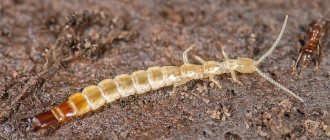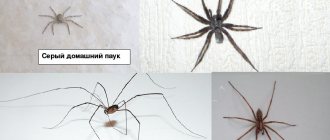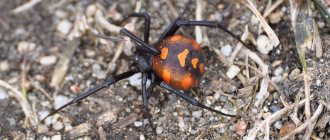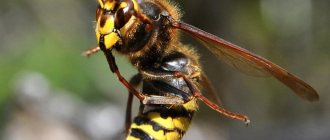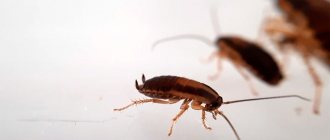Otolaryngologists or paramedics at emergency rooms in rural areas, when asked whether an insect can get into the ear, answer that such cases are by no means rare. Several hundred people annually discover uninvited “guests” in their ears. Flying or crawling pests can cause a lot of trouble for a person, especially a small child.
Don’t panic, you can remove an insect from your ear without any health consequences.
What insects can get into the ear?
An insect can fly into the ear by accident, or crawl in, attracted by the smell of earwax. The ear canals may contain:
- various beetles (Coleoptera);
- small lepidoptera – moths, butterflies;
- flies, midges.
- cockroaches;
- spiders (they are not insects, but are able to penetrate the ear canal, for example, when a person is sleeping).
Spider
On a note! There is a common myth that the scary and terrifying earwig can enter a person's ear. There she will gnaw through the eardrum, make her way straight into the brain and lay eggs. The earwig is sometimes also confused with the two-tailed one because of its forked “tail.”
Spiders hibernate in people's homes
It's a natural reaction to choose a warmer location when the temperature drops. Birds fly south, bears dig dens and fall asleep.
In such a situation, it seems logical that spiders climb into people's houses for the winter. But most of the spiders you meet in winter are initially domestic. They have evolved over many years to get the most out of constant living in a home where warmth is offered but not enough food or water.
Is the presence of insects in the ears dangerous?
Any insect cannot live in the ear canal for a long time; it will try with all its might to leave the ear. This causes some discomfort, even pain:
- hearing disorder, deterioration;
- dizziness and loss of coordination due to continuous mechanical irritation of the eardrum;
- itching in the ear caused by movement of the limbs. For some people, especially young children, itching causes an irresistible urge to scratch the affected area. Scratching leads to scratches and inflammation.
- flies and other flying insects on their legs are capable of carrying pathogenic bacteria that cause various diseases. The risk of infection increases if the skin in the ear canal is scratched or damaged.
- A bee or wasp sting in the ear can be painful and also cause a severe allergic reaction, including anaphylactic shock.
Spiders are aggressive
People tend to blame spiders for the bites that appear on their body, believing that they crawl out at night to feast on your blood. However, firstly, spiders are not aggressive, and secondly, most of them hunt during the day.
Spider bites are much less common than many people think. Like most creatures, when a threat appears, the spider tries to hide. These poor guys have poor eyesight, so their movements can be misinterpreted. Even spiders that are dangerous to humans will not attack first.
What to do if an insect gets into your ear?
If an insect is found in the ear, the first thing to do is to calm down, then begin to act. For medical assistance, you should consult an otolaryngologist. A specialist will remove the insect using tools.
After removing the insect from the ear, you need to make sure that no parts of the pest, such as legs or stings, remain inside. Unnoticed insect particles in time can cause inflammation and infection inside the ear.
The ear canal should also be disinfected. If the skin is damaged, it makes sense to instill antibiotics.
Allergies caused by a bite are treated with antihistamines.
Important! All medications are prescribed only by a doctor after a personal request for help!
First aid
If an insect gets into your ear, you can first try to remove it yourself.
- The first way is to tilt your head to the side. The ear into which the beetle crawled should be at the bottom. Gently move your ear with your hand. The pest may fall out of the ear canal.
- You can shake your head slightly, as if you were pouring water out of your ear after bathing.
- Another way: sit upright and direct a direct beam of light into the ear canal, for example, from a table lamp or flashlight. Insects usually strive for a light source, so there is a high chance that the pest will leave the ear on its own.
Light in the ear
Preparing for the procedure for removing an insect from the ear
There are no special preparation measures for the procedure of removing an insect from the ear. Just relax, the doctor will carefully remove the pest.
There is no reason to panic; doctors often have to remove foreign objects from the ear canal. Removing an insect is no more difficult than washing the ear plug; the same methods are used.
Removal methods
If you seek medical help, the doctor can remove the insect from your ear in two ways:
- rinse with plenty of saline solution;
- remove with thin long tweezers.
Folk remedies for removing insects from the ear
If the medical facility is far away, for example, you are in the country, you can try to get the insect out of your ear yourself, using ancient folk methods:
- Drip an oil solution (camphor oil, any vegetable) - 4-5 drops, tilting your head so that the ear with the uninvited guest is on top. Next, you can lie down and tilt your head so that the affected ear is down. If the insect is small (midge, mosquito), it will “float out” along with the leaking liquid.
- If the insect is large enough, for example, a fly, a cockroach, the oil will clog the breathing holes, the pest will not be able to breathe and will die. The dead insect will stop moving and annoying, and it will be easier to remove it.
- Instillation of any alcohol-containing products:
- vodka;
- boric alcohol;
- medical alcohol (70%);
- etc.
will lead to the death of the insect that has climbed into the ear.
- Using hydrogen peroxide. Gently drop the product into the ear canal. When the liquid comes into contact with skin secretions, it will begin to foam profusely. Foam may dislodge insects.
- You can rinse your ear yourself with warm water, pumping it under pressure from a syringe without a needle or from a syringe (bulb), only after making sure that there is an insect in the ear.
Hydrogen peroxide
Important! If there is not an insect in the ear and you try to remove it with liquid, it can be dangerous. The foreign body will gain moisture, swell and completely block the ear canal, which can cause inflammation and pain.
There are always spiders within a radius of one meter from a person
This myth is pure nonsense. We can't even begin to imagine how many spiders there are in the world, but to assume that you can't even stand up or lie down without hitting a spider is simply ridiculous. The myth began when archaeologist Norman Platnick began his 1995 paper by saying, “wherever you are sitting reading this, a spider is probably no more than a few feet away.” People took this as a fact when in fact he was just speculating. Over time, a few meters grew into a meter, and the word “probably” was dropped altogether. By 2001, books were citing this myth as fact.
What not to do?
If any insect gets into your ear, do not do anything rash.
- Do not try to remove the insect with hard, sharp objects:
- cotton swabs;
- toothpicks;
- hairpins and pins;
- tweezers;
- knife;
- screwdrivers.
These objects can pierce the eardrum, scratch, and injure the ear canal.
- Do not use hazardous liquids for rinsing and instillation:
- brilliant green;
- iodine solution;
- alkali;
- acid;
- sweet alcoholic tinctures;
- urine.
This can cause a burn or inflammation.
- You cannot avoid taking any measures if you know for sure that an insect is located in your ear.
Female black widow spiders eat their males
This myth is not completely false. It is rather misinterpreted. Female black widows actually eat their males, giving rise to the term "black widow" in society, meaning an extremely suspicious or angry woman. But in fact, if this happens, it is not as often as many people believe. There are many different types of black widows, and only a few of them eat their males. Even so, they only eat their males if they are hungry, which is as good an excuse as any.
Male spiders are much smaller than females, their body size is less than 25 percent of the female's, and when they mate, they must be very close to the female's mouth, making it difficult to escape, but they can still manage to run away. Therefore, although this myth is partially justified, it is given much more attention than it deserves, since of the few species of black widows that practice eating males, only a few succeed in this. The reality is not as sinister as popular culture makes it out to be.
Lifestyle and behavior
In 3rd grade environmental lessons, students can learn many interesting facts about the life of arachnids. To talk about spiders, you can use the following information about the habits and lifestyle of spiders:
Most arachnids lead a sedentary lifestyle. They build their own home, which can be of several types:
- Minks. They are dug in soft soil. They serve not only as a habitat, but also as a reliable refuge from enemies. Spiders leave it in the evening or at night.
- Tubes This is a shallow vertical burrow, the walls of which are lined with cobwebs. The entrance to it may have the shape of a funnel. Such a dwelling is used as a means of hunting.
- Tires. A special superstructure in the form of a movable lid or door that closes the entrance to the outside. Spiders camouflage it with sand or leaves.
- Caps. This is a lair that resembles a spider's web in appearance. It is located in the center of the network. Sensing danger, the spider hides under it and closes the entrance with a piece of web.
Arachnids are known for weaving trapping webs. But not all varieties have this ability.
Scientists have made several attempts to reproduce it in the laboratory, but the experiments were unsuccessful.
Despite weightlessness, the web has high strength. It is so strong that it is several times superior to the materials used to make body armor. If the thickness of the thread is increased to the diameter of a pencil, it will be able to stop a plane.
The web is lightweight. A thread of spider web, the length of which is equal to the Earth's equator, will weigh only 340 grams.
The outside of the fishing net is covered with a special liquid to which small insects stick. However, the spider moves along it freely. This happens thanks to the hairs that cover the spider's legs and reduce the contact area.
Some species hunt like true predators, attacking their prey.
Arachnids are good hunters who can track prey for several hours.
Singapore spider , in order to distract the attention of predatory wasps, builds a copy of itself out of garbage. This protection allows him to quickly escape from his pursuers.
Some species of arachnids can jump well. In this way they cover long distances. As they jump, they spread webs to help them land accurately.
Water spiders are able to stay under water for a long time. To breathe, they form a large bladder filled with air.
The gladiator spider, which lives in Australia, weaves a square-shaped bag from its web. He sneaks up on the victim unnoticed and throws a net over him.
Dangerous and poisonous
The most toxic is black widow . They are several times stronger than the venom of a rattlesnake.
The venom of the Brazilian spider is not always fatal. Its bite is dangerous for men because it has a negative effect on potency.
A small banana spider can paralyze muscles and respiratory organs. He injects poison if he is in danger.
Kipling's Bagheera is a species of arachnid that feeds exclusively on plant matter. Spiders eat leaves, and in rare cases they can feast on insect larvae.
Most of the world's population is obsessed with the fear of spiders. The usual image of an arachnid can cause horror, rapid heartbeat and panic. This painful condition is called arachnophobia. You should be aware that most spiders found in the house will not survive if released because they have adapted to living in certain conditions.
